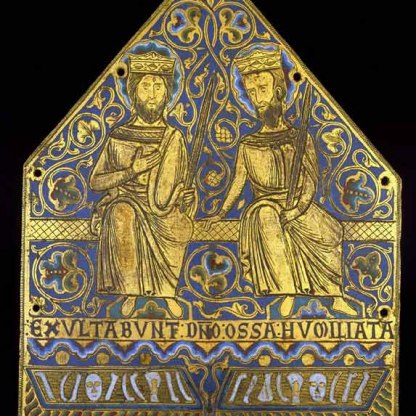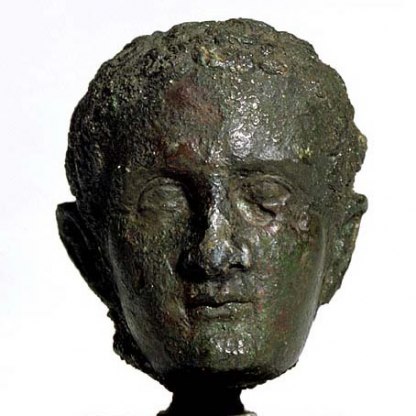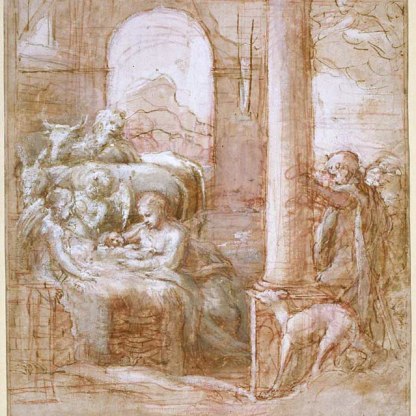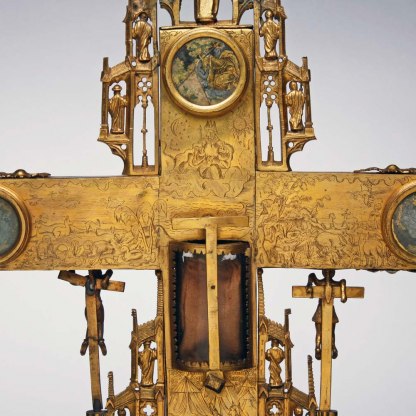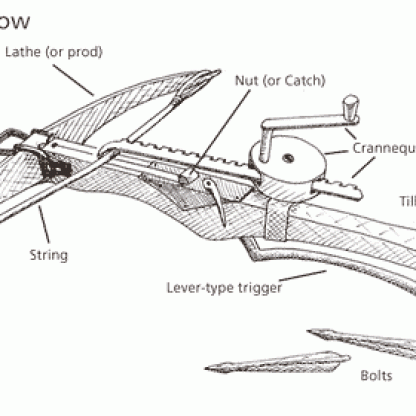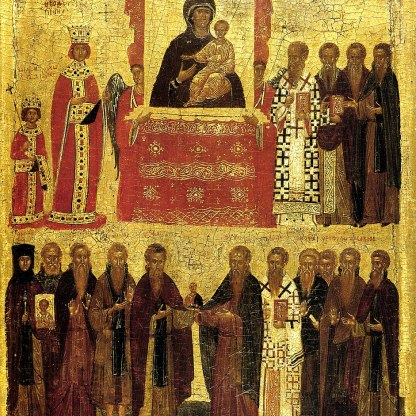The Four Crowned Saints
Confusingly, nine martyrs appear in the legends associated with the church of the Quattro Coronati in Rome.
When the Emperor Diocletian [CM.893-1936] was in Pannonia, a Roman province in central Europe, he ordered some local stonemasons to carve an image of Asclepius, the popular pagan god of healing. The four craftsmen allotted this task – Claudius, Castorius, Sempronianus and Nicostratus – were, however, secretly Christians. Probably in obedience to the Second Commandment, which forbade the making of 'any graven image', the men refused to carry out this imperial commision. Along with a fifth colleague – Simplicius – they were punished by being fastened into lead coffins and cast into a river. In one version of the story, the recalcitrant stonemasons were beaten with scorpions before being drowned. Their remains were then collected and kept by fellow Christians.
Back in Rome, Diocletian ordered the building of a temple to Asclepius. When it was completed the army was ordered to offer incense before the image of the god. Four Christian soldiers – Severus, Severianus, Carpophorus and Victorinus – refused to perform this rite and were scourged to death with lead weights.
Melchiades, Pope between 311 and 314, is said to have dedicated the church of the Quattro Coronati in Rome to these four soldiers. Five centuries later, their relics, along with those of the stonemasons, were bought to the church. Their feast day is 8 November.
The martyrs were particularly popular in stonemasons’ guilds in the middle ages, and to this day a Masonic Lodge in London is named after the Quattuor Coronati.
Other highlight objects you might like
Other pathways and stories you might like
Sign up to our emails
Be the first to hear about our news, exhibitions, events and more…

